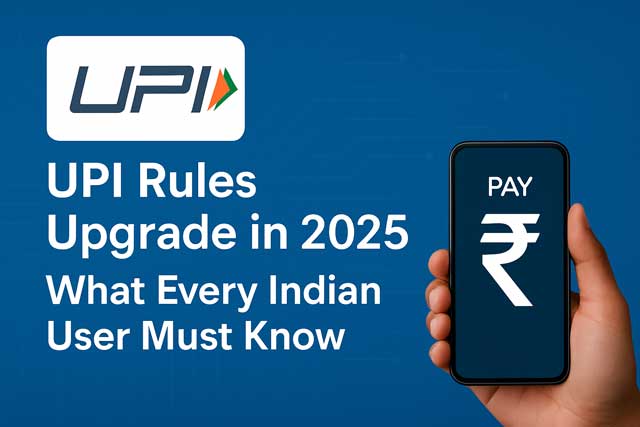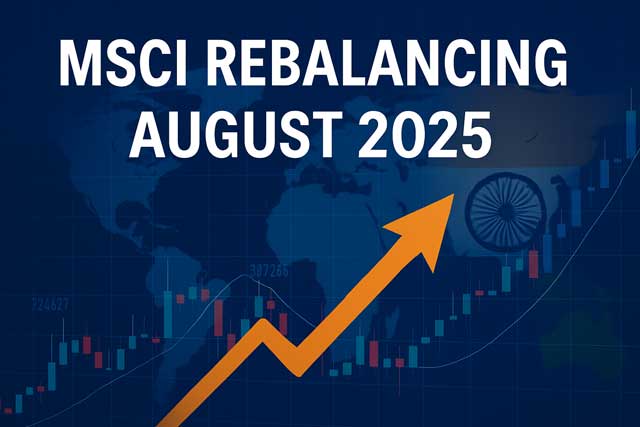UPI Rules Upgrade in 2025: What You Need to Know as a User
India’s digital payments landscape continues to evolve at a rapid pace, and at the center of this revolution is UPI (Unified Payments Interface). With over 10 billion transactions processed every month, UPI has become the backbone of India’s cashless economy. In 2025, the National Payments Corporation of India (NPCI) and Reserve Bank of India (RBI) have introduced several upgrades to UPI rules aimed at improving user experience, ensuring better security, and supporting growing use cases.
In this blog post, we’ll break down the major updates to UPI rules upgrade in 2025, what they mean for individuals and businesses, and how you can stay ahead of the changes.

Key UPI Rules Upgrade in 2025
Let’s dive into the most important updates announced this year:
1. Higher Transaction Limits for Select Categories
Previously, most UPI transactions were capped at ₹1 lakh per day. However, with the increasing use of UPI for high-value payments, especially in sectors like healthcare and education, the RBI has allowed higher limits:
Education and Healthcare Payments: The transaction limit has been increased to ₹5 lakh per day when paying to verified institutions.
Credit Cards Linked to UPI: Users can now make payments up to ₹1 lakh per day using credit cards (such as RuPay Credit Cards) linked with UPI.
This change supports the broader acceptance of UPI for essential services and offers consumers more flexibility with big-ticket payments.
2. Deactivation of Inactive UPI IDs
In an effort to reduce clutter and enhance security, NPCI has mandated that UPI IDs not used for 1 year will be deactivated.
Before deactivation:
Banks and UPI apps must notify users at least 30 days in advance.
Users can choose to retain the ID by making a small transaction.
Why it matters: This prevents misuse of dormant UPI handles, protects user data, and streamlines the UPI ecosystem.
3. Faster Refunds for Failed Transactions
One common complaint from users has been the delay in refunds for failed or incomplete UPI transactions. Under the new rules:
Auto-refunds must now be processed within T+1 working day (Transaction day + 1).
If delays persist, banks may face penalties or customer compensation.
This move boosts user confidence in the reliability of UPI, especially for critical payments like EMIs, bill payments, and online purchases.
4. Streamlined UPI for Merchant Payments (P2M Transactions)
UPI isn’t just a peer-to-peer tool anymore. Over 30% of all UPI transactions now involve Person-to-Merchant (P2M) payments.
To support this:
Transaction limits for P2M have been increased, allowing small and medium businesses (SMBs) to accept larger payments.
Simplified onboarding for new merchants on UPI is being rolled out, especially for rural businesses.
This directly benefits kirana stores, freelancers, service providers, and digital entrepreneurs.
5. Interoperability and Multi-Bank Linking
Users can now link multiple bank accounts across different UPI apps more efficiently. This supports a truly interoperable ecosystem, where:
You can use one UPI ID across multiple apps.
You get better control over which account to debit/credit without switching apps.
This update enhances flexibility and user choice, which are central to UPI’s growth.
What Do These Changes Mean for You?
For Consumers:
More freedom in making higher-value payments.
Quicker resolution for transaction issues.
Improved safety with inactive account deactivation.
Better control over linked accounts across UPI apps.
For Businesses and Merchants:
Easier acceptance of larger UPI payments from customers.
Faster onboarding and improved digital payment integration.
Lower reliance on PoS machines and reduced cash handling.
For Banks and Fintech Apps:
Need to update backend systems for faster refunds.
Required to maintain stricter compliance for customer communication and data security.
Opportunity to offer value-added services on top of UPI rails.
Focus on Security and Fraud Prevention
Alongside these rule upgrades, there’s also a strong emphasis on securing the UPI ecosystem:
Device binding and location tracking are being strengthened to prevent unauthorized transactions.
AI-powered fraud detection is being integrated into bank and UPI apps.
Awareness campaigns are ongoing to educate users about phishing and scam calls related to UPI.
As UPI adoption grows, protecting users against fraud becomes a top priority.
What’s Next for UPI?
Looking ahead, UPI is expected to support:
International transactions (already piloted in countries like UAE, Singapore, and Sri Lanka).
Recurring payments for subscriptions using AutoPay.
UPI Lite and UPI 123PAY to support offline and feature phone users.
The 2025 rule upgrades are a foundation for these future developments, ensuring UPI remains scalable, inclusive, and secure.
How to Prepare as a UPI User
To stay updated and secure, here are some quick tips:
Check if your UPI ID is active and make a small transaction if needed.
Update your UPI app regularly to receive the latest features and security patches.
Enable UPI notifications and SMS alerts from your bank.
Be cautious of fraud attempts – never share your UPI PIN or OTP with anyone.
Link your credit card on UPI if you often make high-value purchases.
6. Conclusion
The UPI rules upgrade in 2025 marks another milestone in India’s fintech journey. With higher limits, faster refunds, cleaner data, and greater interoperability, the UPI experience is becoming more robust and user-friendly.
Whether you’re an individual, a small business, or a fintech developer, these changes are designed to make UPI smarter, faster, and safer for everyone.
Stay informed, stay secure, and keep transacting with confidence.

